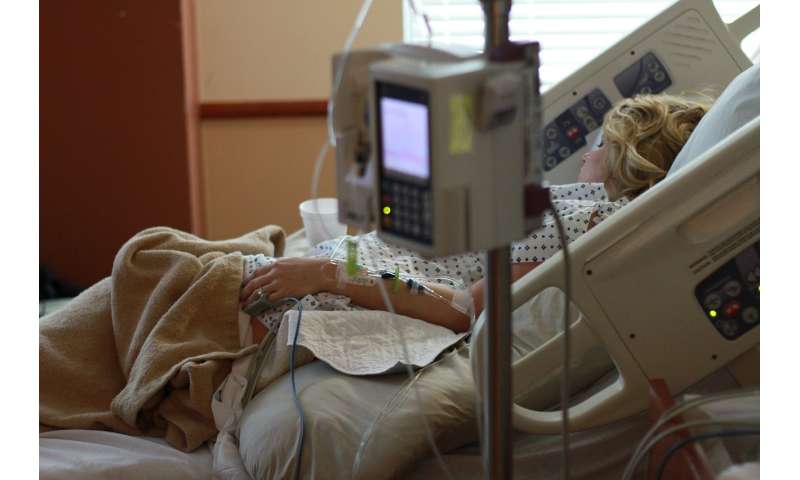
Hospitals can get noisy, especially intensive care units, and the life-saving electronic machines monitoring patient vital signs are making most of the racket.
Mike Rayo, an assistant professor of integrated systems engineering at Ohio State University, is working to improve and organize the cacophony to help caregivers and patients alike.
For almost a decade, Rayo has collaborated on hospital alarm research with human factors and ergonomics experts like Judy Edworthy and Ohio State professors David Woods and Emily Patterson. Edworthy, a professor of applied psychology at the University of Plymouth, is considered by many to be “the godmother” of auditory alarm design.
Rayo’s most recent work has allowed him to further alarm research and directly improve patient care. It began with a 2018 article in which he and his colleagues discussed designing and testing potential audible alarm signals to replace those currently in use. They demonstrated that, in all tests, their newly designed alarm signals significantly outperformed the current alarm signals.
“Judy brought a large number of us together from different disciplines to understand alarm efficacy in real health care situations,” Rayo said. He and other co-authors are also members of an Association for the Advancement of Medical Instrumentation committee, led by Edworthy, to draft a new global medical device safety standard.
Rayo’s current research explores the use of the acoustical quality of timbre, the characteristics that allow the ear to distinguish sounds that have the same pitch, tempo and loudness.
“It’s basically the sound quality left when you take out all the other easily described qualities, like pitch, rhythm, frequency and so on,” he explained. “If I play the exact same note at the same pitch for the same duration at the same rhythm on a clarinet, a trumpet and a piano, the human ear can tell the difference.”
In a 2019 study in the journal Ergonomics, Rayo and his team from the Wexner Medical Center Alarm Taskforce compared two sets of alarms in an actual inpatient setting. In a hospital environment, Rayo estimated that more than 10 alarm sources are present in any given room.
“Each of those are going to emit a number of alarms,” he said. “For example, a heart monitor we observed had alarms with multiple timbres.”
Rayo proposed the assignment of a specific timbre to each medical or physiological category of a monitor—for example, heart, lungs, brain and so on. Other sound qualities, like frequency or pitch, would signal differences between normalcy and urgency.
The study was conducted in 11 inpatient units at the Wexner Medical Center. Alarms were transmitted to inpatient nurses on hand-held devices typical to a modern hospital setting.
His team found that making alarms more acoustically rich by using timbre to convey medical groups and by associating other qualities with urgency improved identifiability and category match.
“Our new set of sounds were perceived as more similar within the alarm groups, facilitated better identification of individual alarm sounds and of alarm groups, and conveyed a wider range of urgency than the baseline sounds,” Rayo said.
The improved, timbre-focused sounds developed by his team are now implemented on the Wexner Medical Center nurses’ hand-held devices.
“I have not heard of another hospital or system that has custom-designed their alarm tones,” he said. “This partnership is somewhere between rare and unique.”
Susan Moffatt-Bruce, who was executive director at the Wexner Medical Center during the project, said, “This project was pivotal to truly leverage the learning health care system and improve patient safety for the entire Wexner Medical Center. This is where human factors experts like Dr. Rayo and Dr. Patterson can improve clinical outcomes and improve health care resilience.”
Rayo said his team’s findings also are relevant for other industries that employ a series of alarm sounds.
He believes too many assumptions are made when medical or safety alarms are designed rather than design decisions being based on data and testing.
Source: Read Full Article
